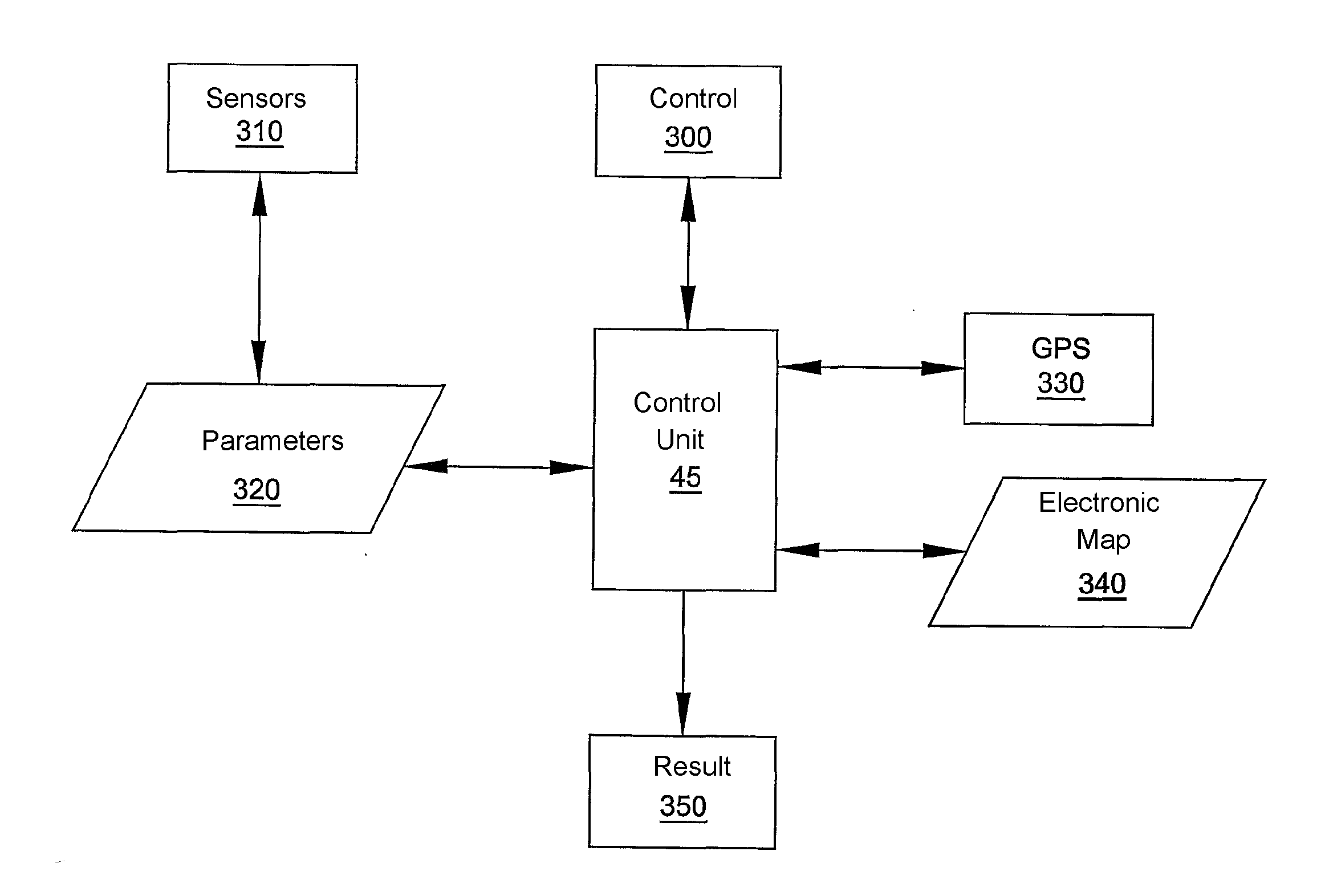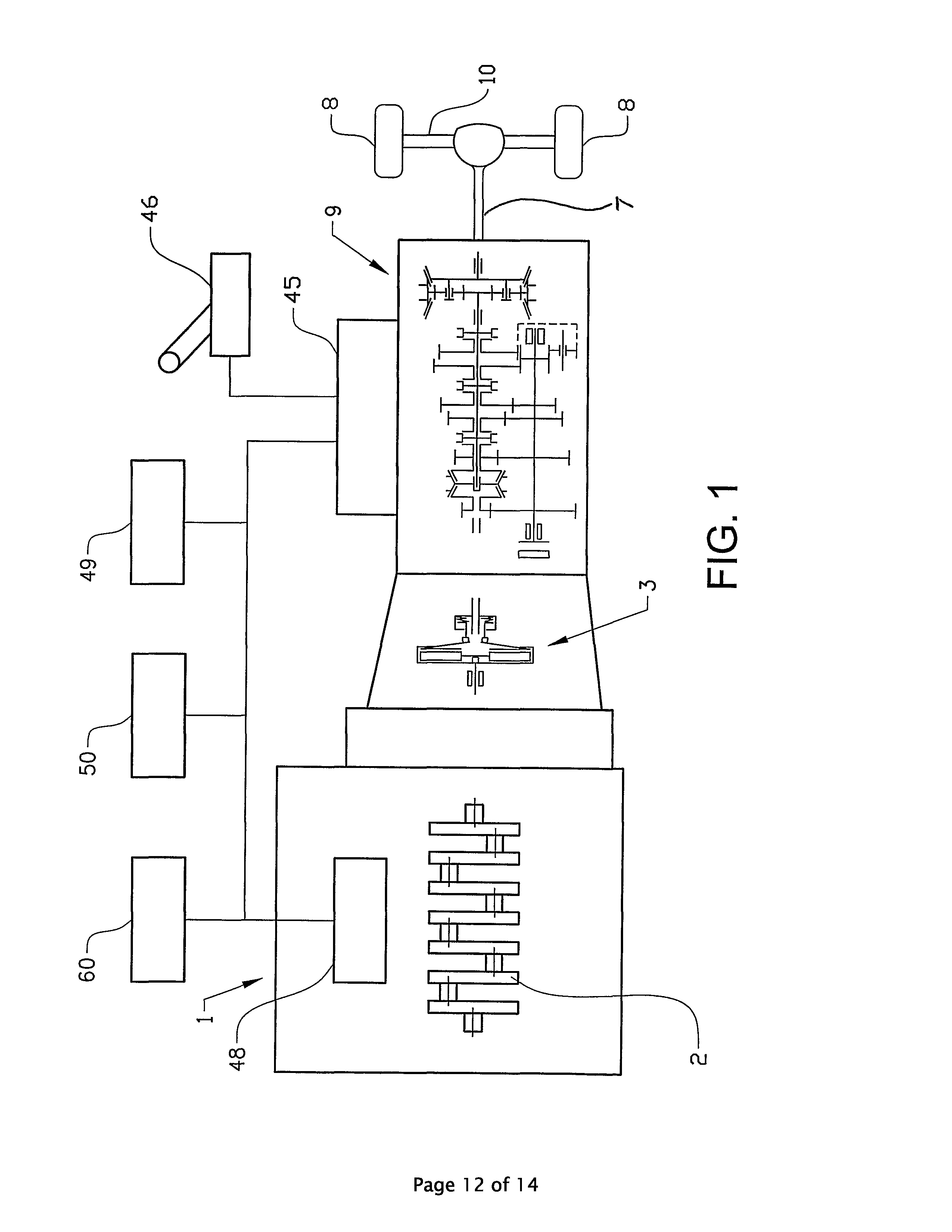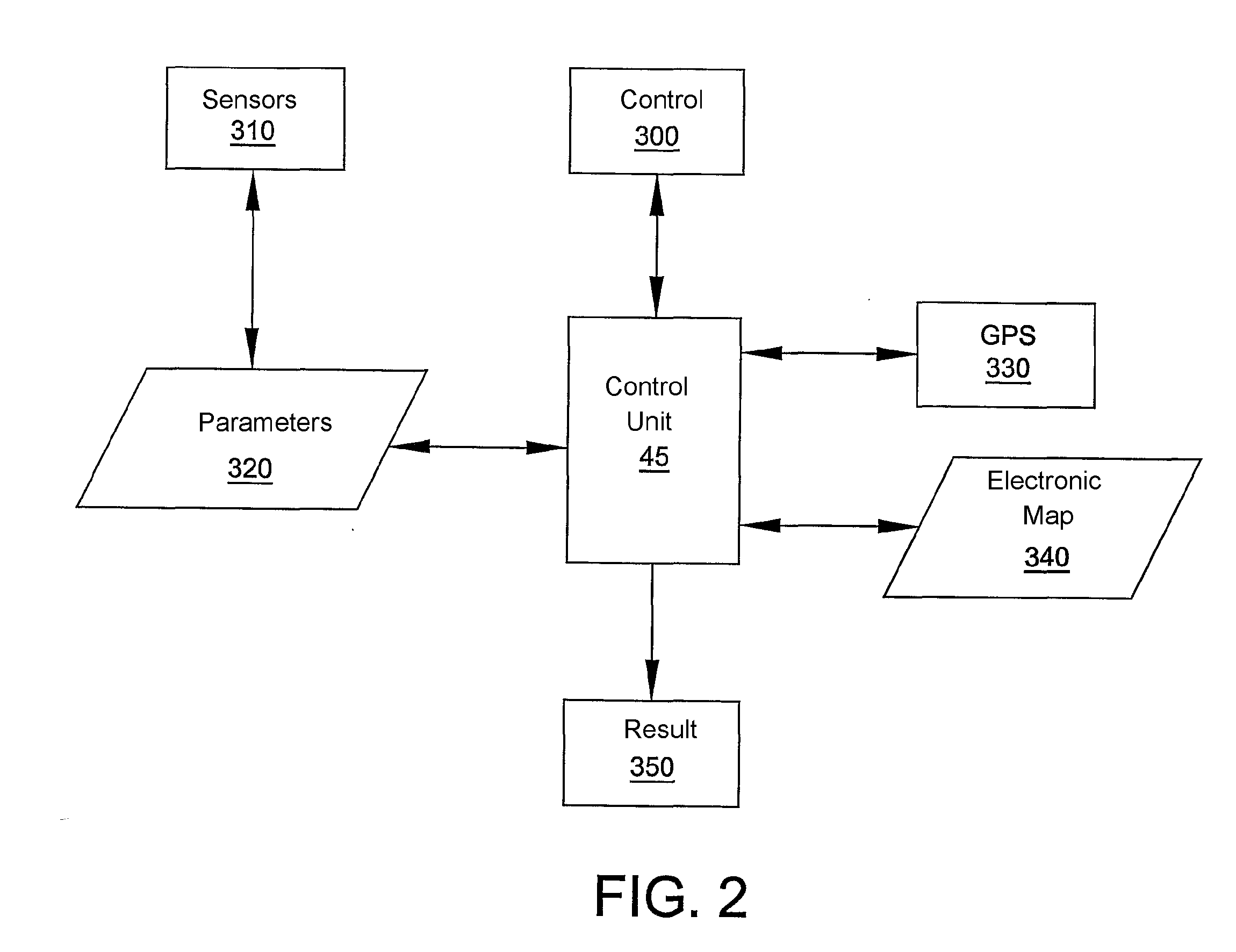Method for optimizing a braking sequence
a braking sequence and optimization method technology, applied in the direction of braking systems, process and machine control, instruments, etc., can solve the problems of insufficient auxiliary braking, gear selection and auxiliary braking cannot be optimized with regard to future topography, service brake is a friction brake with a tendency to wear, etc., to achieve less tendency to wear
- Summary
- Abstract
- Description
- Claims
- Application Information
AI Technical Summary
Benefits of technology
Problems solved by technology
Method used
Image
Examples
Embodiment Construction
[0017]FIG. 1 shows a schematic illustration of a first embodiment of a system according to the invention for optimizing a braking sequence in a vehicle. A motor 1 is connected via its outgoing shaft to an automatic gearbox 9, which normally enables the vehicle to be driven with several different gears between the motor 1 and driving wheels 8. The gearbox 9 can be equipped with auxiliary gear boxes (for example split gear or range gear) in order to obtain more gears. An automatic disc clutch 3 is arranged between the I motor and the gearbox for transferring torque from the motor 1 to the gearbox 9. A primary auxiliary brake 48 is arranged in the motor 1. It should be noted that the primary auxiliary brakes 48 can also be arranged between the motor 1 and the gearbox or in the gearbox on its ingoing shaft. An auxiliary brake of, for example, the compression type is arranged in the motor 1, while a retarder is normally arranged on the ingoing shaft of the gearbox 9. A drive shaft 7 tran...
PUM
 Login to View More
Login to View More Abstract
Description
Claims
Application Information
 Login to View More
Login to View More - R&D
- Intellectual Property
- Life Sciences
- Materials
- Tech Scout
- Unparalleled Data Quality
- Higher Quality Content
- 60% Fewer Hallucinations
Browse by: Latest US Patents, China's latest patents, Technical Efficacy Thesaurus, Application Domain, Technology Topic, Popular Technical Reports.
© 2025 PatSnap. All rights reserved.Legal|Privacy policy|Modern Slavery Act Transparency Statement|Sitemap|About US| Contact US: help@patsnap.com



